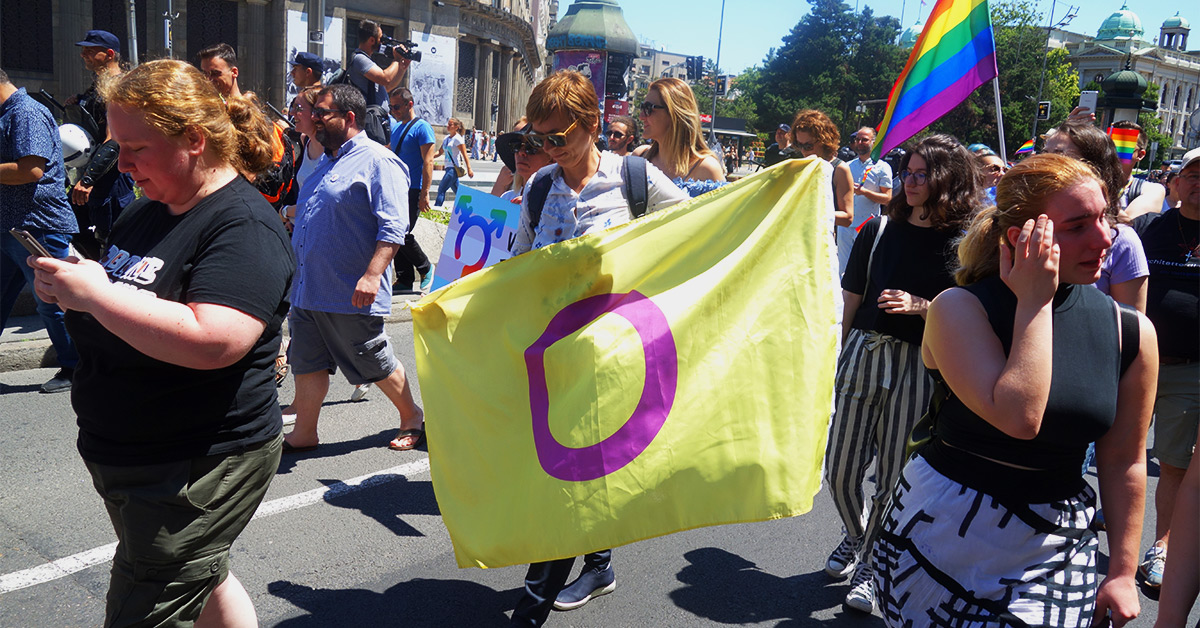Intersex

Bojan Cvetanović, CC BY-SA 4.0, via Wikimedia Commons
The Human Rights Campaign describes intersex people as those born with a variety of differences in their sex traits and reproductive anatomy. There is a wide variety of difference among intersex variations, including differences in genitalia, chromosomes, gonads, internal sex organs, hormone production, hormone response, and/or secondary sex traits.
According to GLAAD, intersex is an umbrella term describing people born with reproductive or sexual anatomy and/or a chromosome pattern that can’t be classified as typically male or female. While some people can have an intersex condition and also identify as transgender, the two are separate and should not be conflated.
According to Interact, About 1.7% of people are born intersex. (Compare that to a ~0.3% chance of having identical twins!) 1 in 2,000 babies (0.05% of humans) are born with genital differences that a doctor might suggest changing with unnecessary surgery.
As Affirmation creates worldwide communities of safety, love, and hope and promotes understanding, acceptance, and self-determination of individuals of diverse sexual orientations, gender identities and expressions, we are fully inclusive of intersex individuals.